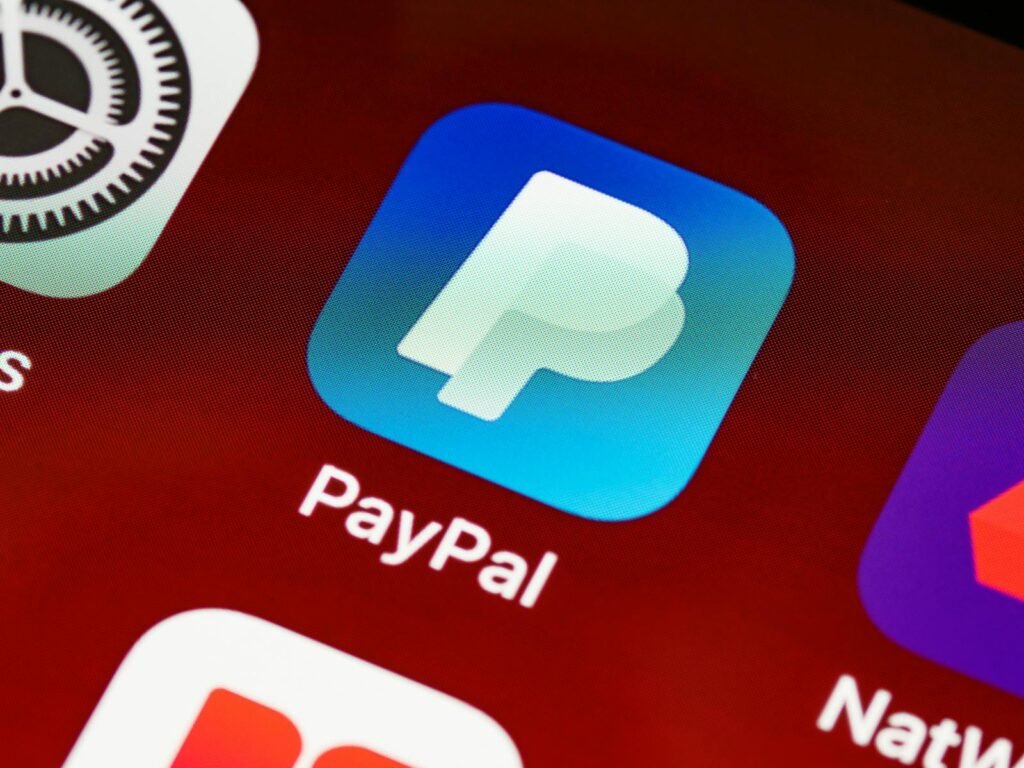
PayPal vs Venmo: Which is Better for Peer-to-Peer Transactions?
Deciding between PayPal and Venmo for peer-to-peer transactions can be as perplexing as choosing between two delectable desserts – a challenging decision that must be made nonetheless!
PayPal, with its long-standing reputation in the payment industry, has solidified itself as a trustworthy platform. As Warren Buffett wisely noted, “The only way to get love is to be lovable,” and PayPal’s widespread acceptance and stringent security measures certainly make it a lovable option for online transactions. On the flip side, Venmo caters to a younger audience with its social media-inspired layout and whimsical transaction descriptions. Echoing Coco Chanel’s words, “In order to be irreplaceable, one must always be different,” Venmo certainly sets itself apart in its own quirky way.
Ultimately, the choice between PayPal and Venmo hinges on personal preference. Are you an experienced online shopper seeking familiarity and security? Then PayPal may suit your needs best. Or are you a trendy millennial looking for a more interactive and casual payment experience? In that case, Venmo might align better with your taste. Regardless of your decision, it is crucial to ensure that your online business is equipped to seamlessly accept payments. As an online store developer in today’s digital age, embracing various payment methods isn’t just an option – it’s a necessity!
The Pros and Cons of Using Apple Pay for Online Purchases
When venturing into the chaotic realm of online transactions, Apple Pay is a mysterious ally with a touch of stealth. Imagine this scenario – it’s the witching hour, clad in your sleepwear, yearning for that coveted gadget you’ve been coveting. With Apple Pay, it’s akin to waving a mystical wand and *poof*, the purchase materializes! As Steve Jobs once mused, “Innovation sets apart leaders from followers,” and Apple Pay embodies just that innovative spirit, simplifying online shopping effortlessly.
However, let us not overlook the shadows looming over potential drawbacks. At times, akin to an obstinate feline ignoring your pleas, not all online retailers harmonize seamlessly with Apple Pay. It feels like being the lone attendee dressed up for a costume soirée – quite awkward! Despite these hiccups, we must heed Benjamin Franklin’s sage words: “The acrid taste of subpar quality lingers long after the allure of low prices fades.” The key lies in striking a delicate balance between convenience and compatibility within the vast expanse of internet purchases.
Square Cash vs Google Pay: A Battle of Convenience
In the ongoing battle of convenience between Square Cash and Google Pay, these titans of the digital payment world are locked in a fierce competition for the coveted title of supreme user-friendliness. With Square Cash’s direct approach and Google Pay’s seamless connection to all things Google, it’s a perplexing challenge to determine which one truly reigns supreme.
Square Cash thrives on its simplicity, adhering to the belief that “simplicity is the ultimate sophistication” with precision. In just a few taps, users can effortlessly send money to friends, split bills, and request funds without any hassle. On the flip side, Google Pay offers a multitude of features that seamlessly integrate with your Google account, making online transactions smooth sailing. As Albert Einstein famously stated, “The intuitive mind is a sacred gift and the rational mind is a faithful servant.” In this scenario, Google Pay’s burstiness shines through as it streamlines payments with finesse.
Security Features of Zelle vs Stripe: Which is Safer?
When delving into the realm of online transactions, one cannot overlook the paramount importance of security. Let us delve deeper into the intricacies of Zelle and Stripe’s security features in order to unravel which platform offers a more secure environment for your financial dealings.
Zelle boasts an array of security measures that are truly commendable, such as end-to-end encryption and two-factor authentication for enhanced protection. In my capacity as an expert in the field of online commerce, I can confidently affirm that Zelle’s strategic partnerships with major financial institutions serve as an additional safeguard for your funds. As tech luminary Ashton Kutcher once articulated, “The essence lies in furnishing cutting-edge solutions that prioritize user safety.” It appears that Zelle is steadfastly adhering to this ethos.
On the opposing end stands Stripe, a formidable player in the online payment domain renowned for its robust arsenal of anti-fraud tools and unwavering adherence to industry security protocols. Equipped with state-of-the-art machine learning algorithms and real-time transaction oversight capabilities, Stripe surpasses expectations when it comes to fortifying your sensitive financial data. Echoing the sentiments of investment titan Warren Buffett who famously declared, “Risk stems from ignorance,” we find solace in knowing that Stripe’s comprehensive security infrastructure ensures our virtual exchanges are shielded from potential threats.
Comparing Transaction Fees: PayPal vs Cash App
In the perplexing world of online transactions, the looming question of transaction fees reigns supreme. In this digital arena, PayPal and Cash App stand as formidable contenders, each vying for dominance. PayPal, a seasoned veteran with a global presence, imposes fees on receiving funds from loved ones. On the other hand, Cash App boasts simplicity and swiftness, offering a more straightforward fee schedule.
For those delving into the realm of e-commerce like myself, grasping the intricacies of transaction fees can be transformative. It’s akin to deciphering Warren Buffet’s famous words: “Price is what you pay. Value is what you get.” While PayPal may cast a wider net, Cash App’s transparent fee structure could ultimately save you a bundle in the long haul. It’s reminiscent of choosing between dining at a Michelin-starred restaurant or indulging in your favorite food truck both satisfying options but one leaving your wallet feeling lighter.
As you venture forth on your online payment expedition, remember to carefully evaluate your choices and select the platform that aligns best with your business objectives amidst this burstiness landscape.
User-Friendly Interface Showdown: Venmo vs Google Wallet
In the perplexing realm of digital wallets, ease of use is key. Venmo and Google Wallet both aim to offer a smooth experience, but how do they measure up against each other? Let’s delve into the interface showdown and uncover the truth.
Venmo beckons with its vibrant and whimsical design, drawing you in like a mystical creature of the technological era. Its social feed allows you to glimpse into your friends’ activities in a playful manner, adding a personal touch to transactions. As Steve Jobs once mused, “Design isn’t just about appearance and feel. Design is about functionality.” And Venmo certainly functions flawlessly, making splitting expenses and sending money to pals effortless with just a few taps. On the contrary, Google Wallet takes on a more minimalist approach, prioritizing practicality over flamboyance. Its neat layout and simple navigation cater to individuals who prefer straightforwardness over extravagance. In the wise words of Albert Einstein, “Everything should be made as simple as possible, but not simpler.” Google Wallet embodies this philosophy by simplifying payment processes without unnecessary distractions.
Mobile Wallet Showdown: Apple Pay vs Samsung Pay
Apple Pay and Samsung Pay – the behemoths of technology embroiled in a fierce battle within the realm of mobile wallets. Picture a futuristic rendition of David versus Goliath, armed with cutting-edge devices and advanced payment technology as their ammunition. Apple loyalists extol the virtues of Apple Pay’s simplicity and sophistication, while Samsung devotees laud the adaptability and interoperability of Samsung Pay. It’s an epic clash that transcends time.
On one side stands Apple Pay, conceived by the visionary Steve Jobs himself, revolutionizing transactional paradigms with a mere tap of our fingertips. On the opposing end is Samsung Pay, emerging from obscurity in the tech sphere with an unwavering determination to demonstrate that innovation knows no boundaries. A collision of creativity and resourcefulness unfolds before us, each party striving for supremacy as the ultimate champion in mobile wallet dominion.
As an Ecommerce developer, it is enthralling to observe how these titans are reshaping the digital payments landscape, pushing limits and establishing fresh benchmarks in this ever-evolving arena.
The Battle of International Payments: PayPal vs TransferWise
In the tumultuous realm of international payments in the online business sphere, two formidable contenders emerge: PayPal and TransferWise. It’s akin to witnessing a clash between rival pirates, both hungry for their slice of the treasure trove. PayPal, like a seasoned captain with its global reach and recognizable name, maneuvers through rough waters with ease. Meanwhile, TransferWise acts as the shrewd navigator offering smooth sailing through its emphasis on minimal fees and transparent rates.
In this epic showdown between PayPal and TransferWise, the decision ultimately hinges on your business requirements and preferences. As Richard Branson famously remarked, “Business opportunities are like buses; there is always another one approaching.” Whether you opt for PayPal’s established route or embrace TransferWise’s innovative strategy, remember that success in e-commerce lies in adapting to the ever-shifting currents of online transactions.


